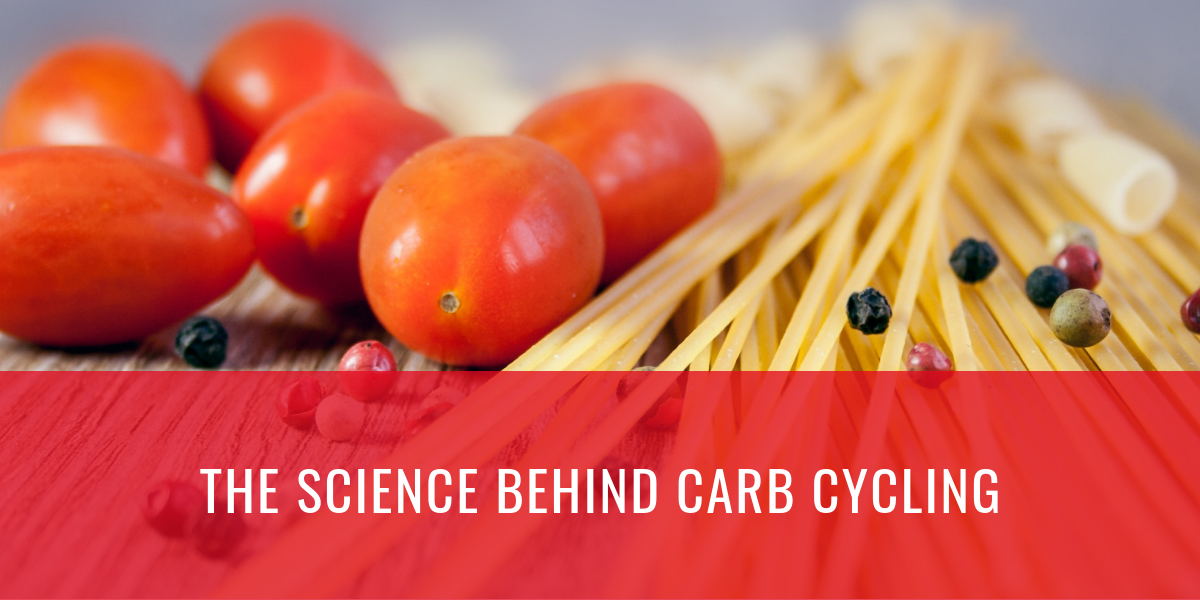If you want to know what carb cycling is, and if it is necessary to lose body fat, then you want to read this article.
Carbohydrates have been public enemy #1 amongst dieters for years now. Thanks to the likes of the paleo, keto, and Atkins crowd, the everyday fitness enthusiast looking to drop a few pounds is under the assumption that in order to lose weight, they have to completely eliminate carbohydrates (or severely restrict them) from the diet.
And this simply isn’t true.
The reality is that by following the old diet advice of “eat less, move more” you can, and will, lose unwanted body fat.
And that’s all the vast majority of people really need.
However, for those times when you want to get absolutely ripped, simply moving more and eating less might not get you as lean as you want.
In these situations, you need to embrace some more “advanced” weight loss tactics that helps the body lose its stubborn fat once and for all. This is where things such as zig-zag dieting, intermittent fasting, and carb cycling come into play.
Today, we’re going to take a closer look at carb cycling and see if it can actually help you lose those last few stubborn pounds.
Pyretic Black contains a synergistic blend of ingredients that supplies smooth, long-lasting energy and helps you stay on track with your fat loss diet.

What is Carb Cycling?
As the name implies, carb cycling refers to strategically varying your carbohydrate intake from one day to the next to match your carb intake with your amount of physical activity.
It is an advanced nutritional strategy used by athletes to help burn fat, break through a weight loss plateau, maintain metabolism during dieting, and/or enhance athletic performance.
Carb cycling is meant to be used in the short-term and not for a prolonged period of time.
How Does Carb Cycling Work?
Generally speaking, you rotate between two or three different carbohydrate intakes throughout the week (high carb, moderate carb, and low/no carb).
On the days you have intense workouts, you will usually eat more carbohydrates, and on the days you are less physically active (i.e. rest days), you eat fewer/no carbohydrates.
While carbohydrate intake with change throughout the week, dietary protein intake will remain relatively consistent. Fat intake will vary depending on your carbohydrate intake for a given day.
For example, on days where you eat a higher amount of carbohydrates, your fat intake will be lower. Conversely, on days when carb intake is low, fat intake will be higher.
One of the more common methods in which carb cycling is applied is to eat low carb for three days followed by two days of higher carb.
The benefits of the low carb days is that it allows you to upregulate fat burning due to the low levels of insulin in the body. The high carb days are there to support exercise performance, recovery, and glycogen replenishment.
Now, it should be noted that “low carb” days do not completely eliminate carbohydrates. You can (and should) still eat fibrous green veggies and some fruit. But, you will be limiting your intake of starchy carbohydrates, such as pasta, rice, bread, sweet potatoes, and russet potatoes.
Now that we’ve given you a primer on carb cycling, let’s dig a little deeper into the science behind it.
The Science of Carb Cycling
There is not a considerable amount of research investigating the ins and outs of carb cycling[1,2], but it basically revolves around carbohydrate manipulation.
High carb days prompt a larger release of insulin (the body’s primary nutrient storage hormone), which can help refuel muscle glycogen, aid athletic performance, and support the muscle building process due to the anti-catabolic effects of carbohydrates.[3,4]
Furthermore, high carb days may also help improve the function of two hormones that play a key role in hunger and satiety -- ghrelin and leptin.[5,6]
You see, when you diet for prolonged periods of time, your body responds by altering levels of these two hormone so that you get hungrier and stop depriving it of food. The theory with carb cycling, and “refeed days”, is that it gives the body a break and helps to reset ghrelin and leptin levels so that you’re constantly fighting intense pangs of hunger while dieting.
On the flip side, low-carb days are included to promote fat burning and improve metabolic flexibility -- the ability of the body to shift between burning fat or glucose for fuel.[7]
The reason low-carb days enhance fat burning has to do with insulin. When insulin levels are elevated (e.g. after eating a meal with carbohydrates), the body is in “storage” mode and fat burning is downregulated.[8]
The added benefit of these low-carb days is that it may also help improve insulin sensitivity, making the body more efficient at burning and storing carbohydrates.[9]
Is Carb Cycling Needed for Weight Loss?
Can cycling your carbohydrate intake help you lose weight?
Definitely.
Any nutrition protocol that has you consistently eating at a calorie deficit will cause you to lose weight over time, regardless of what foods you eat, or how many meals you eat during the day.
That being said, is it mandatory that you follow a low-carbohydrate diet or cycle your intake of carbohydrates to lose weight?
Definitely not.
Remember weight loss and weight gain is primarily a function of calories in vs calories out.
If you burn more calories than you ingest, you will lose weight. On the flip side, if you consume more calories than you burn, you will gain weight.
Low-carb proponents will point to a handful of studies showing that in the short-term, high-fat, low carb diets are better than higher carb, lower fat diets for weight loss.[11,12,13]
However, this is primarily due to the fact that when eating low-carb you will lose a lot of water weight.
High-fat, low-carb diets also tend to be higher in protein which make them more satiating and does a better job of holding onto lean mass than high carb diets that are lacking in protein.
But, when protein is controlled for (meaning both high fat dieters and high carb dieters consume the same amount of dietary protein each day), researchers have found no significant difference in terms of long-term fat loss.[10,14,15]
In other words, low carb diets are not better for fat loss than higher-carb lower fat diets.
Now, since we’re interested in optimizing body composition (i.e. losing body fat), creating a calorie deficit is only one piece of the fat loss puzzle.
In order to help promote fat loss and protect lean muscle mass while dieting, you must consume enough dietary protein each day (~1-1.5g/lb of bodyweight) and perform resistance-training.
Lifting heavy weights provides the stimulus your body needs to hold onto lean muscle in the midst of a calorie deficit.
At the end of the day eating more carbohydrates on one day of the week vs another will not significantly impact your fat loss. The two main factors dictate fat loss are energy balance and protein intake.
So long as you are consuming enough protein and adhering to a calorie deficit, it doesn’t matter if you cycle your carbohydrates or eat roughly the same amount each day-- you will lose weight.
That being said, some people do experience greater satiety when consuming a higher-fat, lower-carbohydrate diet while cutting, but this is highly individualistic. For every person that feels fuller from a high-fat, low-carb fat loss diet, there’s one that feels less satiated and would function better on a high-carb, lower fat weight loss diet.
How to Set Up a Carb Cycling Diet
As we mentioned above, there are several possible ways to layout a carb cycling diet, but more often than not, individuals follow the 5:2 protocol where 5 days out of the week are low-carb days and two days are high-carb days.
You can choose to allocate your high and low-carb days during the week as you see fit, but we’ve found that it helps to place the high-carb days on the day of our hardest workouts of the week or the day before those workouts. This ensures glycogen stores are topped off and that you have ample energy for your workouts.
For example, if you train legs on Mondays and Thursdays, your high carb days will likely be on Monday and Thursday, or Sunday and Wednesday (the days before each leg day).
On your low-carb days, it’s still important to have the majority of your carbohydrates around your workout, as this will help boost performance and facilitate recovery after training.
In terms of macronutrient percentages, here’s how we like to structure a carb cycling diet:
- Protein: 1 gram per pound (regardless of high carb or low-carb days)
- Carbohydrates: 40-50% of your calories from carbs on high carb days, 20-25% of your calories from carbs on low carb days.
- Fat: remainder of calories after subtracting for protein and carbs
If you need more help on figuring out how many calories you need to lose weight, click here.
Takeaway
Carb cycling is a method of dieting that involves alternating between days of high and low-carb intake, with the belief that it leads to better fat loss and body composition.
The truth is that you can lose weight and achieve the lean sculpted physique you’ve always wanted by simply utilizing a calorie deficit, eating enough dietary protein, and lifting heavy weights.
Carb cycling may work for some individuals, but it does require extra effort, planning, and energy, which may be a deterrent for some dieters.
References
- Boden, G., Sargrad, K., Homko, C., Mozzoli, M., & Stein, T. P. (2005). Effect of a low-carbohydrate diet on appetite, blood glucose levels, and insulin resistance in obese patients with type 2 diabetes. Annals of Internal Medicine, 142(6), 403–411.
- Volek, J. S., Noakes, T., & Phinney, S. D. (2015). Rethinking fat as a fuel for endurance exercise. European Journal of Sport Science, 15(1), 13–20. https://doi.org/10.1080/17461391.2014.959564
- Ivy, J. L. (1998). Glycogen resynthesis after exercise: effect of carbohydrate intake. International Journal of Sports Medicine, 19 Suppl 2, S142-5. https://doi.org/10.1055/s-2007-971981
- Borsheim, E., Cree, M. G., Tipton, K. D., Elliott, T. A., Aarsland, A., & Wolfe, R. R. (2004). Effect of carbohydrate intake on net muscle protein synthesis during recovery from resistance exercise. Journal of Applied Physiology (Bethesda, Md. : 1985), 96(2), 674–678. https://doi.org/10.1152/japplphysiol.00333.2003
- Dirlewanger, M., di Vetta, V., Guenat, E., Battilana, P., Seematter, G., Schneiter, P., … Tappy, L. (2000). Effects of short-term carbohydrate or fat overfeeding on energy expenditure and plasma leptin concentrations in healthy female subjects. International Journal of Obesity and Related Metabolic Disorders : Journal of the International Association for the Study of Obesity, 24(11), 1413–1418.
- Poehlman, E. T., Tremblay, A., Fontaine, E., Despres, J. P., Nadeau, A., Dussault, J., & Bouchard, C. (1986). Genotype dependency of the thermic effect of a meal and associated hormonal changes following short-term overfeeding. Metabolism: Clinical and Experimental, 35(1), 30–36.
- Kunces, L., Volk, B., Freidenreich, D., Saenz, C., Fernandez, M. L., Maresh, C., … Volek, J. (2014). Effect of a very low carbohydrate diet followed by incremental increases in carbohydrate on respiratory exchange ratio (LB444). The FASEB Journal, 28(1_supplement), LB444. https://doi.org/10.1096/fasebj.28.1_supplement.lb444
- Reaven, G. M. (1979). Effects of differences in amount and kind of dietary carbohydrate on plasma glucose and insulin responses in man. The American Journal of Clinical Nutrition, 32(12), 2568–2578. https://doi.org/10.1093/ajcn/32.12.2568
- Gower BA, Goss AM. A lower-carbohydrate, higher-fat diet reduces abdominal and intermuscular fat and increases insulin sensitivity in adults at risk of type 2 diabetes. J Nutr. 2014;145(1):177S–83S. doi:10.3945/jn.114.195065
- Johnston, C. S., Tjonn, S. L., Swan, P. D., White, A., Hutchins, H., & Sears, B. (2006). Ketogenic low-carbohydrate diets have no metabolic advantage over nonketogenic low-carbohydrate diets. The American Journal of Clinical Nutrition , 83(5), 1055–1061. Retrieved from http://ajcn.nutrition.org/content/83/5/1055.abstract
- Yancy, W. S. J., Olsen, M. K., Guyton, J. R., Bakst, R. P., & Westman, E. C. (2004). A low-carbohydrate, ketogenic diet versus a low-fat diet to treat obesity and hyperlipidemia: a randomized, controlled trial. Annals of Internal Medicine, 140(10), 769–777.
- Volek J, Sharman M, Gómez A, et al. Comparison of energy-restricted very low-carbohydrate and low-fat diets on weight loss and body composition in overweight men and women. Nutr Metab (Lond). 2004;1(1):13. Published 2004 Nov 8. doi:10.1186/1743-7075-1-13
- Samaha, F. F., Iqbal, N., Seshadri, P., Chicano, K. L., Daily, D. A., McGrory, J., … Stern, L. (2003). A Low-Carbohydrate as Compared with a Low-Fat Diet in Severe Obesity. New England Journal of Medicine, 348(21), 2074–2081. https://doi.org/10.1056/NEJMoa022637
- Hall KD, Bemis T, Brychta R, et al. Calorie for Calorie, Dietary Fat Restriction Results in More Body Fat Loss than Carbohydrate Restriction in People with Obesity. Cell Metab. 2015;22(3):427–436. doi:10.1016/j.cmet.2015.07.021
- Thomson, C. A., Stopeck, A. T., Bea, J. W., Cussler, E., Nardi, E., Frey, G., & Thompson, P. A. (2010). Changes in body weight and metabolic indexes in overweight breast cancer survivors enrolled in a randomized trial of low-fat vs. reduced carbohydrate diets. Nutrition and Cancer, 62(8), 1142–1152. https://doi.org/10.1080/01635581.2010.513803













Leave a comment
This site is protected by hCaptcha and the hCaptcha Privacy Policy and Terms of Service apply.